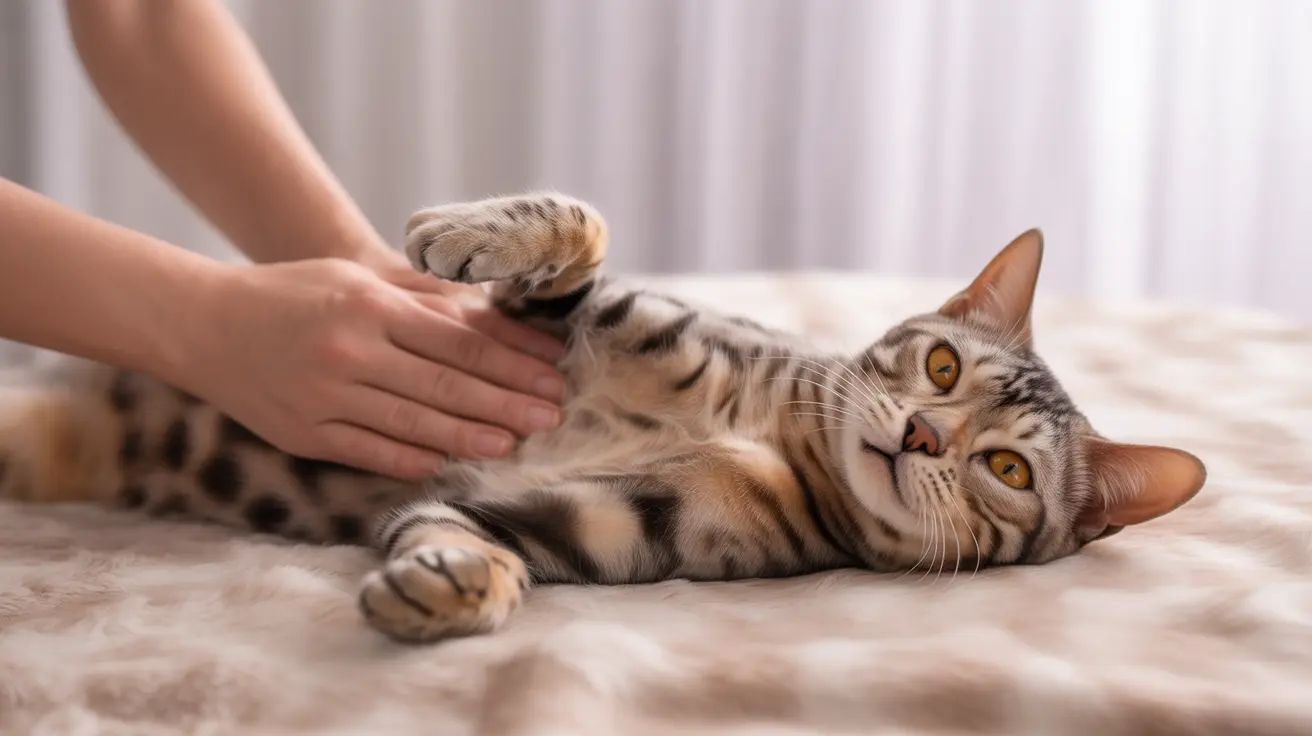If your cat is struggling with constipation, massage can be a gentle and supportive remedy when used correctly. This comprehensive guide explores how to safely perform massage techniques for constipated cats, along with important precautions and complementary care strategies.
Understanding Cat Constipation
Constipation in cats occurs when they have difficulty passing stools or experience infrequent bowel movements. This common condition can affect cats of any age but is particularly prevalent in senior cats and those with underlying health issues. Signs of constipation include straining in the litter box, hard or dry stools, reduced appetite, and visible discomfort.
Benefits of Massage for Constipated Cats
When performed correctly, gentle abdominal massage can help stimulate bowel movements and provide relief from mild constipation. The technique works by:
- Promoting natural intestinal movement
- Helping to relax tense abdominal muscles
- Reducing stress and anxiety
- Supporting overall digestive health
Safe Massage Techniques for Constipated Cats
Follow these steps to safely massage your constipated cat:
Preparation
- Choose a quiet, comfortable location
- Wait until your cat is relaxed and receptive
- Ensure your hands are warm
- Position your cat on their side or in a comfortable resting position
Proper Massage Method
- Begin with gentle strokes along the back to help your cat relax
- Use light, circular motions on the lower abdomen
- Move your fingers in a clockwise direction
- Apply minimal pressure
- Watch for signs of discomfort or resistance
- Keep sessions brief, usually 3-5 minutes
Additional Support Measures
Massage should be part of a broader approach to managing constipation:
Dietary Considerations
- Increase moisture intake through wet food
- Add fiber-rich foods to their diet
- Consider vet-approved supplements
- Ensure fresh water is always available
Lifestyle Changes
- Encourage regular exercise
- Maintain a clean litter box
- Establish a consistent feeding schedule
- Reduce stress factors in the environment
When to Seek Veterinary Care
While massage can help with mild constipation, certain situations require immediate veterinary attention:
- No bowel movement for more than 48 hours
- Signs of severe pain or distress
- Vomiting or complete loss of appetite
- Blood in the stool
- Crying when using the litter box
Frequently Asked Questions
How do I safely perform a massage on my constipated cat to help relieve discomfort?
Use gentle, clockwise circular motions on your cat's lower abdomen, applying minimal pressure. Start with light strokes and watch for signs of discomfort. Keep sessions brief and stop immediately if your cat shows resistance.
What are the signs that my cat is constipated and might benefit from abdominal massage?
Look for straining in the litter box, hard or dry stools, reduced bowel movements, decreased appetite, and visible abdominal discomfort. Your cat may also show signs of lethargy or irritability.
Can massage alone cure my cat's constipation, or when should I see a veterinarian?
Massage should be considered a supportive measure, not a cure. See a veterinarian if constipation persists beyond 48 hours, or if your cat shows signs of severe distress, vomiting, or complete loss of appetite.
What massage techniques are best for stimulating bowel movements in constipated cats?
Gentle clockwise circular motions on the lower abdomen, moving from the ribcage toward the tail, are most effective. Always use light pressure and maintain a calm, patient approach.
Are there any risks or precautions I should know before massaging a constipated cat?
Never force massage if your cat resists, avoid applying pressure if there's abdominal pain, and stop immediately if your cat shows signs of distress. Massage is contraindicated in cases of severe bloating or suspected blockage.
Conclusion
While massage can be a helpful tool in managing feline constipation, it's important to use it as part of a comprehensive care approach. Always prioritize your cat's comfort and seek veterinary care when necessary. With proper technique and attention to your cat's responses, massage can provide gentle relief and support overall digestive health.






